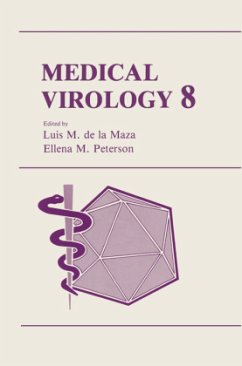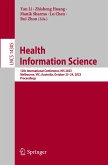From Book News, Inc.
"Proceedings of an international symposium in San Francisco, September 1988. The 13 papers consider viruses not only as pathogens, but also as models for research on biological processes in higher organisms and as vehicles for carrying out protective or curative therapies. Topics include new approaches to testing for various viruses, the molecular epidemiology of Epstein-Barr virus, prospects for vaccines, and HIV1/AIDS in terms of statistics of the epidemic and interactions with other viruses. Another 45 papers are represented by one-page abstracts." -- Annotation copyright Book News, Inc. Portland, Or.
No other area of biology has grown as fast and become as relevant over the last decade as virology. It is with no little amount of amaze ment, that the more we learn about fundamental biological questions and mechanisms of diseases, the more obvious it becomes that viruses perme ate all facets of our lives. While on one hand viruses are known to cause acute and chronic, mild and fatal, focal and generalized diseases, on the other hand, they are used as tools for gaining an understanding of the structure and function of higher organisms, and as vehicles for carrying protective or curative therapies. The wide scope of approaches to different biological and medical virological questions was well rep resented by the speakers that participated in this year's Symposium. While the epidemic by the human immunodeficiency virus type 1 continues to spread without hope for much relief in sight, intriguing questions and answers in the area of diagnostics, clinical manifestations and therapeutical approaches to viral infections are unveiled daily. Let us hope, that with the increasing awareness by our society of the role played by viruses, not only as causative agents of diseases, but also as models for better understanding basic biological principles, more efforts and resources are placed into their study. Luis M. de la Maza Irvine, California Ellena M.
Hinweis: Dieser Artikel kann nur an eine deutsche Lieferadresse ausgeliefert werden.
"Proceedings of an international symposium in San Francisco, September 1988. The 13 papers consider viruses not only as pathogens, but also as models for research on biological processes in higher organisms and as vehicles for carrying out protective or curative therapies. Topics include new approaches to testing for various viruses, the molecular epidemiology of Epstein-Barr virus, prospects for vaccines, and HIV1/AIDS in terms of statistics of the epidemic and interactions with other viruses. Another 45 papers are represented by one-page abstracts." -- Annotation copyright Book News, Inc. Portland, Or.
No other area of biology has grown as fast and become as relevant over the last decade as virology. It is with no little amount of amaze ment, that the more we learn about fundamental biological questions and mechanisms of diseases, the more obvious it becomes that viruses perme ate all facets of our lives. While on one hand viruses are known to cause acute and chronic, mild and fatal, focal and generalized diseases, on the other hand, they are used as tools for gaining an understanding of the structure and function of higher organisms, and as vehicles for carrying protective or curative therapies. The wide scope of approaches to different biological and medical virological questions was well rep resented by the speakers that participated in this year's Symposium. While the epidemic by the human immunodeficiency virus type 1 continues to spread without hope for much relief in sight, intriguing questions and answers in the area of diagnostics, clinical manifestations and therapeutical approaches to viral infections are unveiled daily. Let us hope, that with the increasing awareness by our society of the role played by viruses, not only as causative agents of diseases, but also as models for better understanding basic biological principles, more efforts and resources are placed into their study. Luis M. de la Maza Irvine, California Ellena M.
Hinweis: Dieser Artikel kann nur an eine deutsche Lieferadresse ausgeliefert werden.
From Book News, Inc.
Proceedings of an international symposium in San Francisco, September 1988. The 13 papers consider viruses not only as pathogens, but also as models for research on biological processes in higher organisms and as vehicles for carrying out protective or curative therapies. Topics include new approaches to testing for various viruses, the molecular epidemiology of Epstein-Barr virus, prospects for vaccines, and HIV1/AIDS in terms of statistics of the epidemic and interactions with other viruses. Another 45 papers are represented by one-page abstracts.
Annotation copyright Book News, Inc. Portland, Or.
Proceedings of an international symposium in San Francisco, September 1988. The 13 papers consider viruses not only as pathogens, but also as models for research on biological processes in higher organisms and as vehicles for carrying out protective or curative therapies. Topics include new approaches to testing for various viruses, the molecular epidemiology of Epstein-Barr virus, prospects for vaccines, and HIV1/AIDS in terms of statistics of the epidemic and interactions with other viruses. Another 45 papers are represented by one-page abstracts.
Annotation copyright Book News, Inc. Portland, Or.
From Book News, Inc.
Proceedings of an international symposium in San Francisco, September 1988. The 13 papers consider viruses not only as pathogens, but also as models for research on biological processes in higher organisms and as vehicles for carrying out protective or curative therapies. Topics include new approaches to testing for various viruses, the molecular epidemiology of Epstein-Barr virus, prospects for vaccines, and HIV1/AIDS in terms of statistics of the epidemic and interactions with other viruses. Another 45 papers are represented by one-page abstracts.
Annotation copyright Book News, Inc. Portland, Or.
Proceedings of an international symposium in San Francisco, September 1988. The 13 papers consider viruses not only as pathogens, but also as models for research on biological processes in higher organisms and as vehicles for carrying out protective or curative therapies. Topics include new approaches to testing for various viruses, the molecular epidemiology of Epstein-Barr virus, prospects for vaccines, and HIV1/AIDS in terms of statistics of the epidemic and interactions with other viruses. Another 45 papers are represented by one-page abstracts.
Annotation copyright Book News, Inc. Portland, Or.








